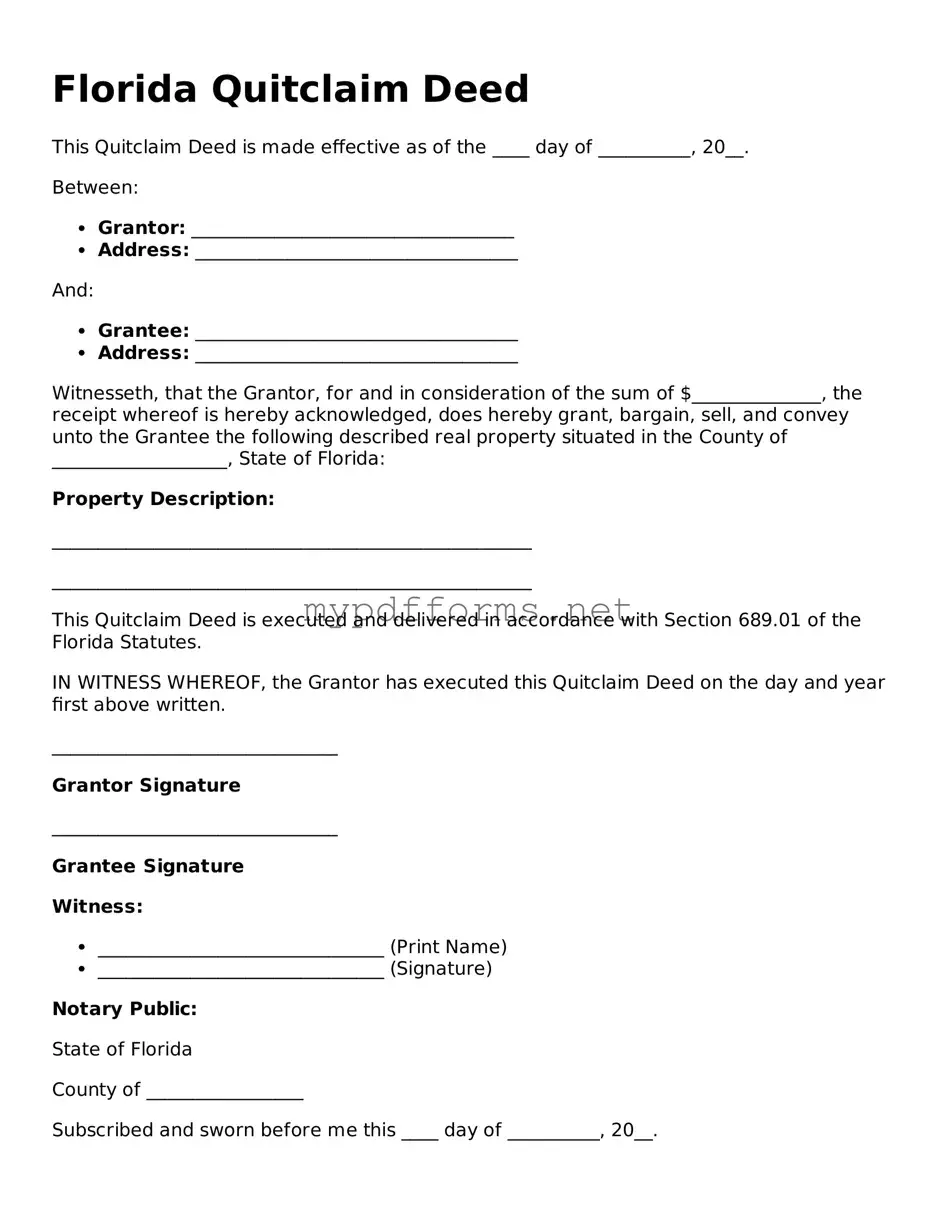A Warranty Deed is similar to a Quitclaim Deed in that both are used to transfer property ownership. However, a Warranty Deed provides a guarantee from the seller that they hold clear title to the property and have the right to sell it. This means that if any issues arise regarding the title after the sale, the seller is responsible for resolving them. In contrast, a Quitclaim Deed offers no such guarantees, making it a riskier option for buyers.
For those looking to navigate the intricacies of transferring ownership, the informative guide on creating an ATV Bill of Sale can prove invaluable. This resource, found at essential ATV Bill of Sale documentation, outlines the necessary details for a secure transaction and ensures clarity for both parties involved.
A Bargain and Sale Deed also shares similarities with a Quitclaim Deed, as it transfers ownership of property. However, this type of deed implies that the seller has the right to sell the property but does not guarantee a clear title. It often comes into play in foreclosure situations or tax sales. While both deeds transfer ownership, the Bargain and Sale Deed offers slightly more assurance than a Quitclaim Deed, though still lacks the full protections of a Warranty Deed.
An Executor's Deed is another document that resembles a Quitclaim Deed. This deed is used when property is transferred from an estate to an heir or beneficiary after the death of the property owner. Like a Quitclaim Deed, it does not guarantee a clear title. Instead, it simply transfers the decedent's interest in the property. The key difference is that an Executor's Deed is specifically tied to the probate process.
A Trustee's Deed is similar in function to a Quitclaim Deed, as it transfers property held in a trust. This deed is executed by a trustee, who is responsible for managing the trust's assets. While it does not provide any warranties regarding the title, it serves to convey the property from the trust to the beneficiary. The absence of title guarantees makes it comparable to a Quitclaim Deed.
A Special Purpose Deed can also be likened to a Quitclaim Deed. This type of deed is often used for specific transactions, such as transferring property between family members or in divorce settlements. While it does not provide any title guarantees, it serves the purpose of transferring ownership. The key distinction lies in the context and purpose of the transfer.
An Affidavit of Title is another document that bears resemblance to a Quitclaim Deed. While it does not transfer property, it is often used in conjunction with a Quitclaim Deed to affirm that the seller has the right to convey the property. The affidavit provides a sworn statement regarding the status of the title, which can help address concerns about ownership and title defects. However, unlike the Quitclaim Deed, it does not actually change the ownership of the property.
Lastly, a Deed in Lieu of Foreclosure is similar to a Quitclaim Deed in that it transfers ownership of a property, often to avoid foreclosure. In this case, the homeowner voluntarily transfers the property back to the lender in exchange for a release from the mortgage obligation. Like a Quitclaim Deed, it does not guarantee a clear title. However, it serves a specific purpose in the context of mortgage default, making it a useful alternative for distressed homeowners.
